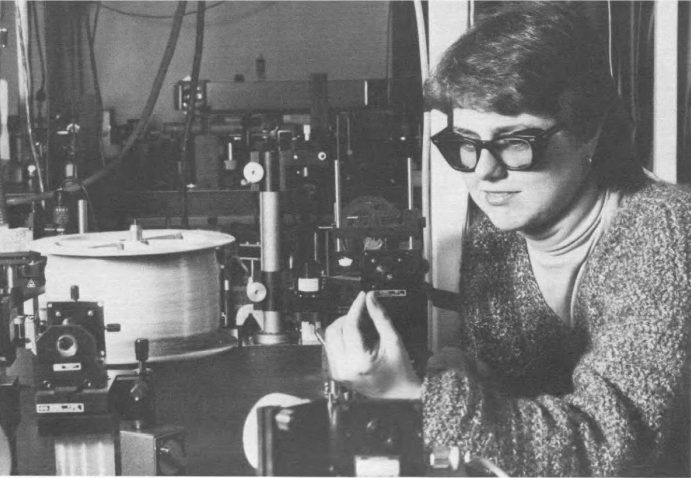Background
"I think people should go with their strength and [physics] was my strength." - Donna Strickland |
Personal Life Donna Strickland was born in Guelph, Ontario, Canada in 1959. Strickland grew up in Guelph where her mother taught English at her high school and her father was an electrical engineer. Strickland described herself as a very shy kid who was very good at math and physics, but nothing else, so she always knew she would go into one of those fields. Strickland decided to attend McMaster University for her undergraduate degree after hearing their engineering physics program had a laser and electro-optics field. Strickland currently works at the University of Waterloo and is very active in her church. She is married to her husband Doug Dykaar, who is also a physicist and electrical engineer, and they have two children. |
Education Strickland attended high school at Guelph Collegiate Vocational Institute. After deciding to pursue a career in optical physics, Strickland got her bachelors degree in engineering physics at McMaster University in Ontario. She attended graduate school in New York at The Institute of Optics, a department of The University of Rochester, where she got her masters degree and Ph. D. It was during her Ph. D. when her and her doctoral advisor Gerard Mourou developed a laser that generated high-intensity, ultrashort optical pulse, called "chirped pulse amplification" without damaging the laser amplifier. This work, published in an article in 1985, is what they were awarded the 2018 Nobel Prize in Physics for. Photo From: https://www.nobelprize.org/uploads/2018/10/strickland-lecture.pdf |
 |